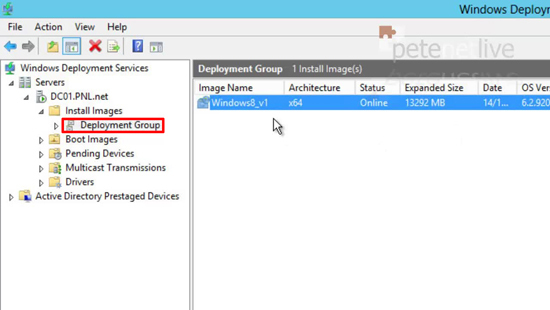Windows Server 2012 - Windows Deployment Services
Deploying Windows 8
Part 1: Install and Configure WDS
Deploying Windows 8
Part 1: Install and Configure WDS
KB ID 0000735 Dtd 12/12/12
Problem
You want to deploy the Windows 8 Client Operating System, to a number of clients usingWDS. In this part we will configure the WDS Server, then we will move onto taking an image of your reference Windows 8 machine. Finally we will cover taking that image, and deploying it out to many target systems.
Solution
Add the WDS Role
1. From Server Manager (ServerManager.exe) > Local Server.
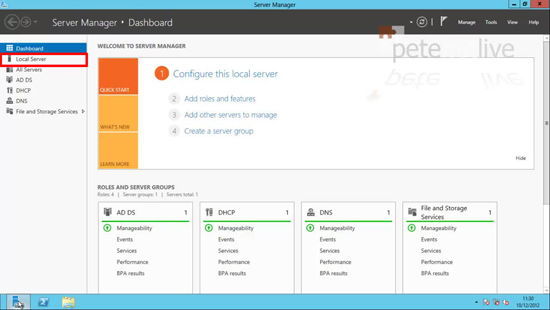
2. Manage > Add Roles and Features.
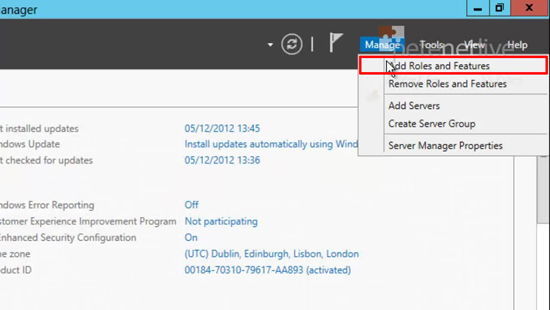
3. Next.
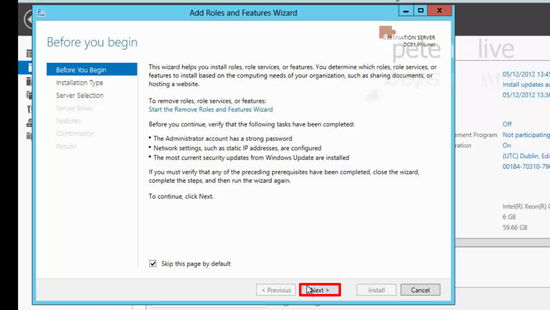
4. Next.
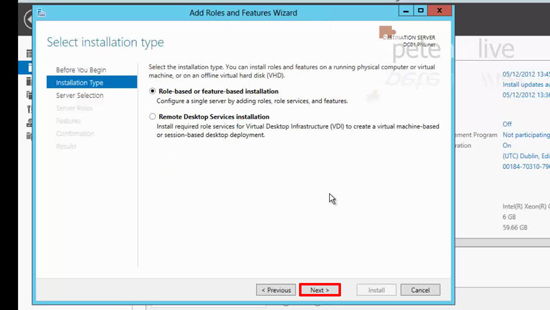
5. Next.
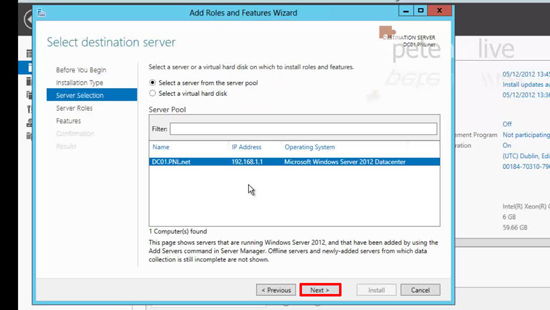
6. Select 'Windows Deployment services' > Next > It will ask to install some other features let it do so.

7. Next.
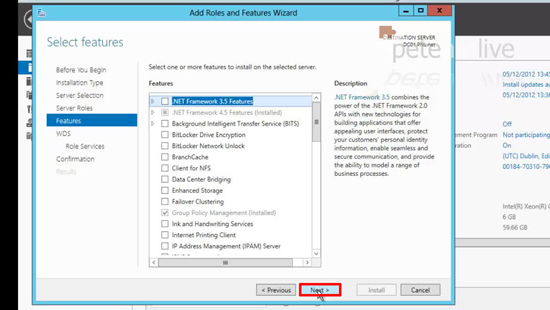
8. Next.
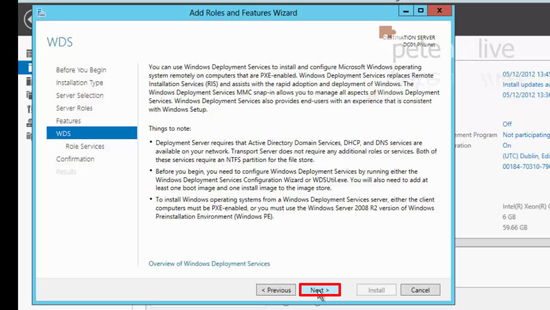
9. Accept the default (both roles) > Next.
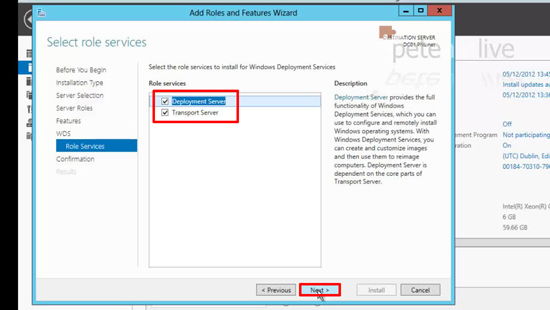
10. Install.
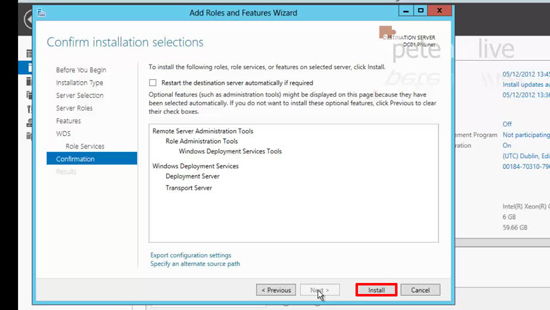
Configure the WDS Server
11. From the Start menu > Launch the Windows Deployment Services management console.

12. Expand servers > Right click the server name > Configure Server.
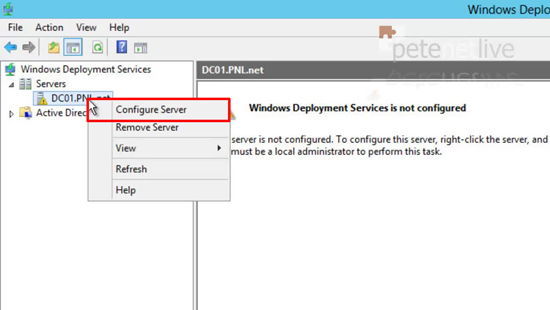
13. Read the prerequisites > Next.
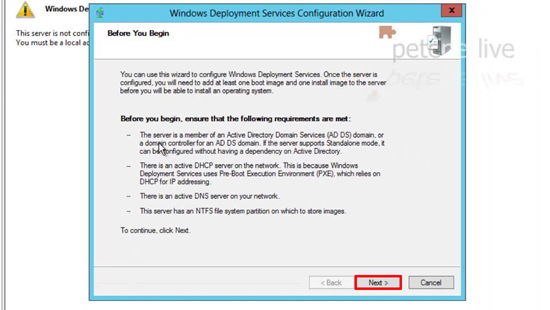
14. Next.
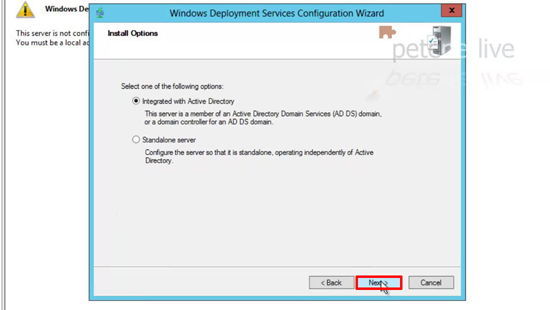
15. Select the location where you want to store your images and keep the WDS files.
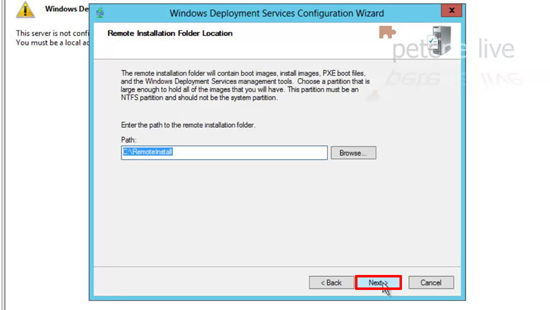
16. Note: In this case it's warning me NOT to use the C:\ drive, as this is just a test server I will accept the warning and leave it as it is. In production environments make sure you are using a different drive/volume.
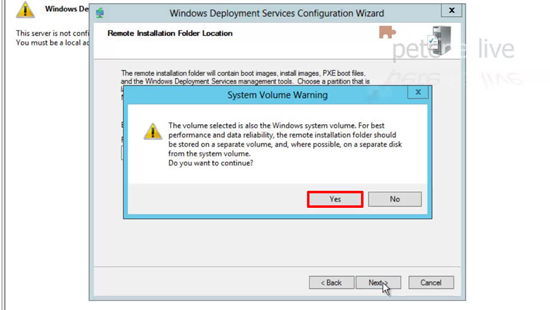
17. This particular server IS a DHCP server, but we will address the DHCP requirements when we are finished > Next.
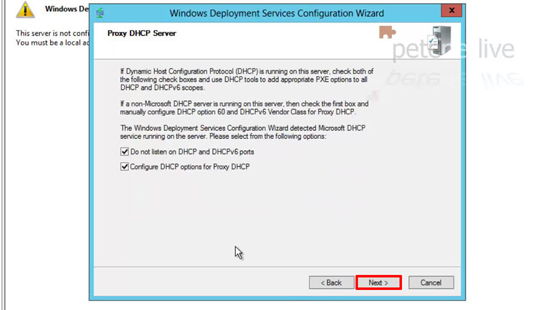
18. I'm going to choose 'Respond to all (known and unknown)' > Next.

19. WDS should configure and the service SHOULD start.
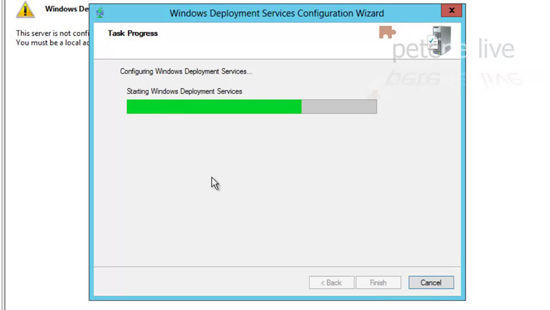
20. Here we can see the service has not started (the server will have a small stop symbol on it).
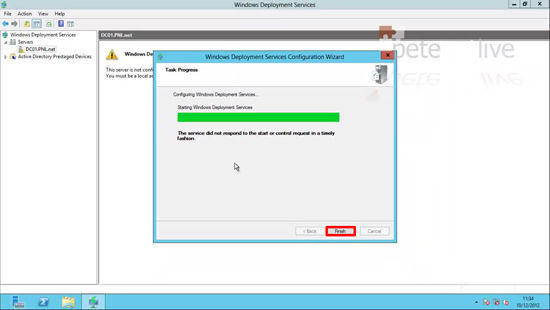
21. So I need to manually start the service.
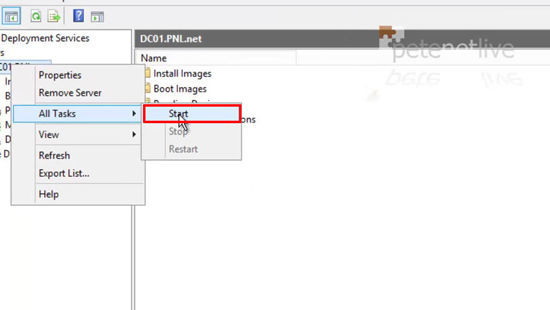
Adding Image Groups and Images
22. Firstly I'm going to create an group that will hold all my Windows 8 Client machine images. Right click Install Images > Add Image Group.
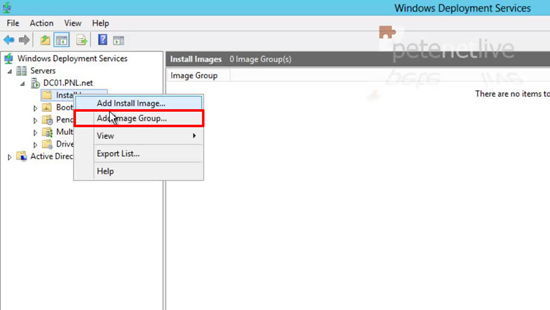
23. Give it a name > OK.

Adding a boot image (To send an image to a remote machine)
24. Now I need to add a boot image, so I can boot my remote clients form the WDS server and use this image to load WindowsPE on them, so they can be imaged. Right click Boot Images > Add Boot Image.
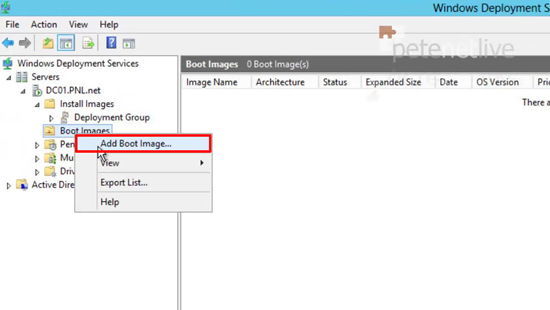
25. You can use either a Windows 8 DVD or a Windows Server 2012 DVD, you will need to navigate to the sources directory, and locate Boot.wim > Open.
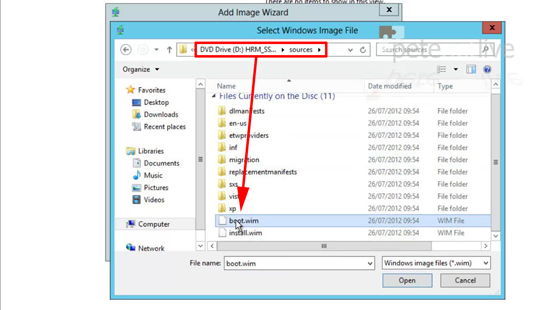
26. Next.
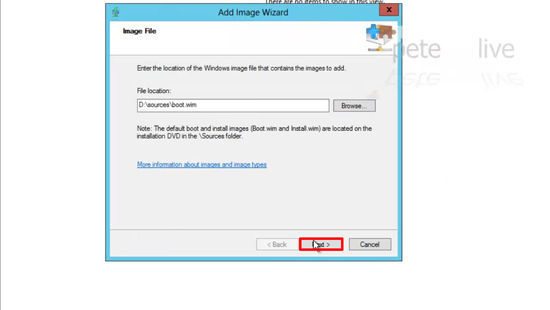
27. Rename the image 'Capture an Image' > Enter a description > Next.
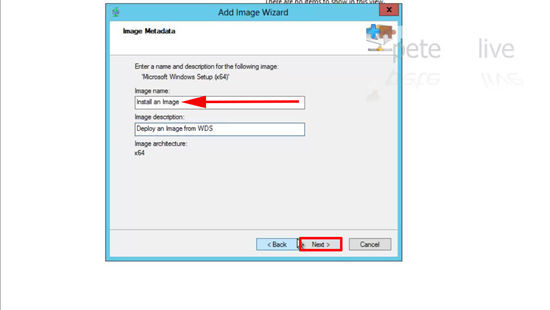
28. Next.
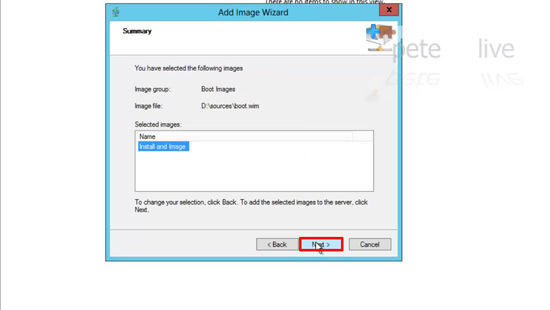
29. The Image will be imported.
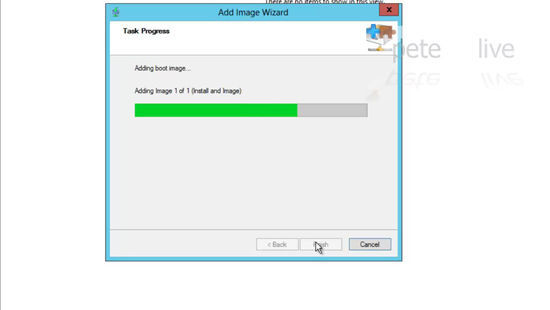
30. Finish.
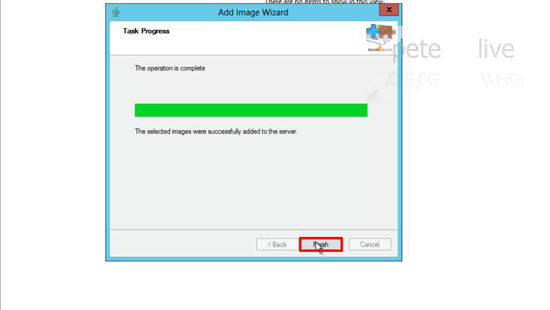
Adding a Capture Image (To take an image from a remote machine)
31. Right click the image we have just added > Create Capture Image.
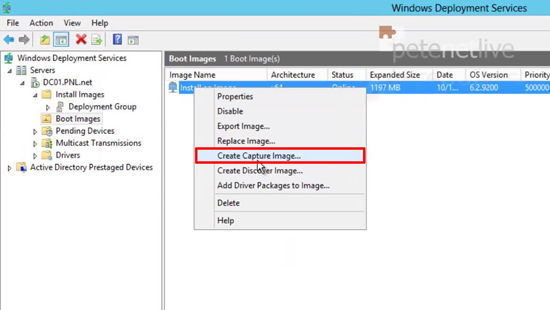
32. Call this one 'Capture an Image' > Give it a description > Save the image (with a .wim extension). Note: It does not matter where you save the image, but I would suggest somewhere in the 'Remote Install' folder > Next.
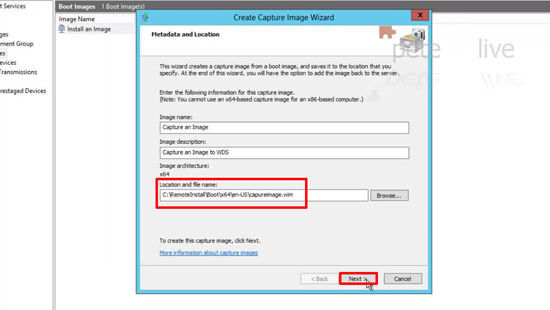
33. The image will be created.
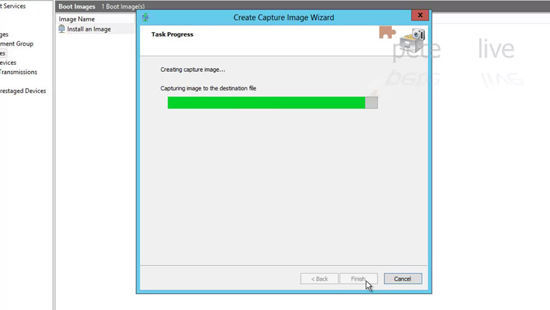
34. Finish
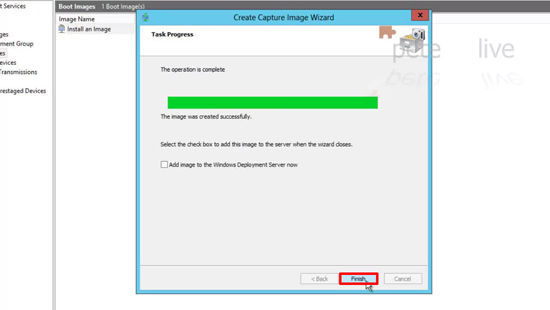
35. Now even through we have created the capture image, we still need to import it. Right click > Add Boot Image.
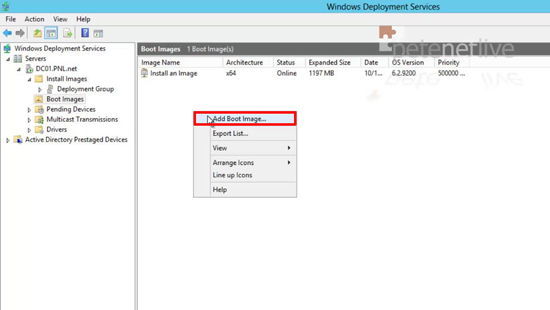
36. Select the capture image you created earlier > Next.
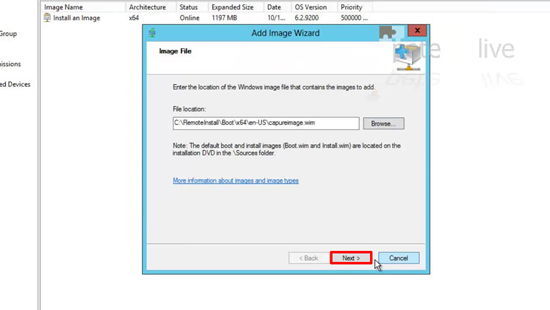
37. Make sure it's called 'Capture and Image' > Next.
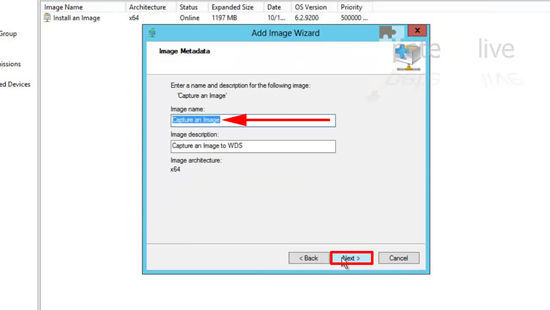
38. Next.
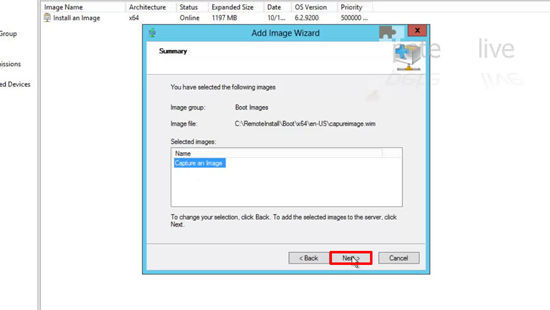
39. Now the capture image will be imported into WDS.
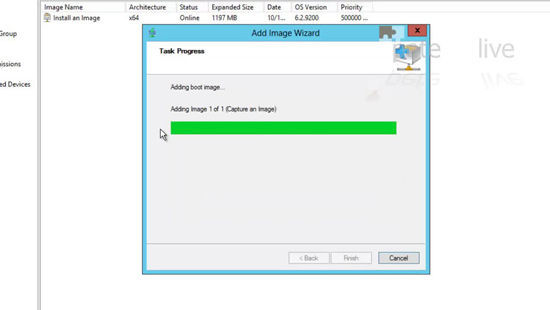
40. Finish.
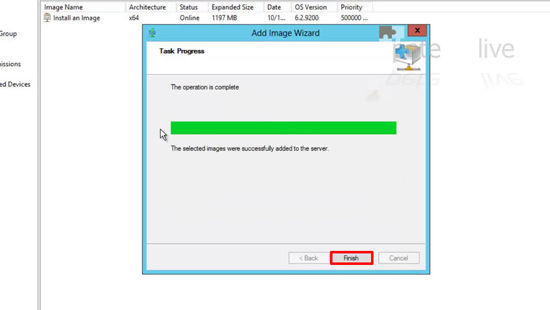
Configure DHCP with WDS Options
41. Launch the DHCP management console.
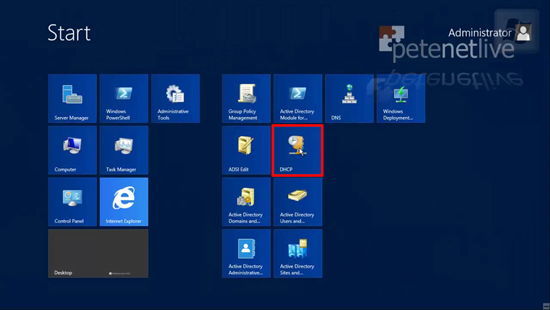
42. Open the active scope > IPv4 > Server Options > Configure Options.
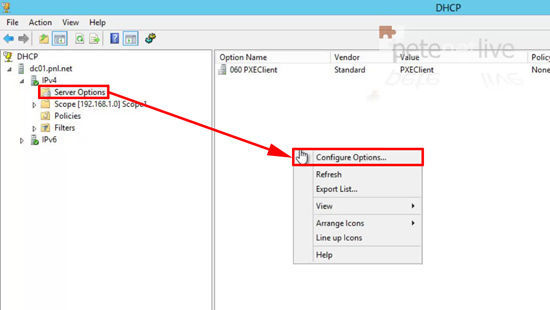
43. Tick Option 66 > Set its value to the IP address of the WDS server > Apply > OK.
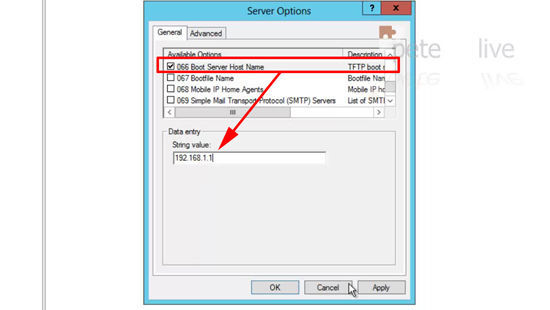
44. Tick Option 67 > Set its value to;
boot\x64\wdsnbp.com
Apply OK
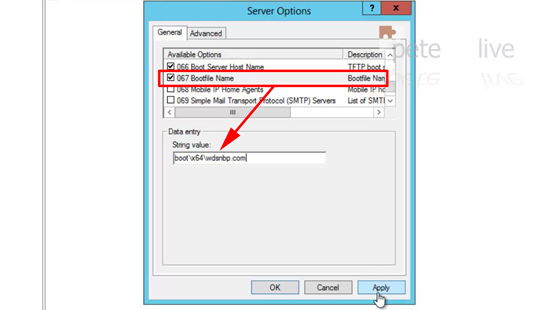
45. Now you are ready to capture an image of your reference Windows 8 machine.
Solution
Before you start, make sure that the machine you are imaging has PLENTY of room on one of its local drive(s), because it copies the image locally, before it sends it to WDS.
Place Your Reference Windows 8 Machine in Audit Mode
To put all the software on your reference machine and configure it how you like, the machine needs to be in 'Audit Mode' before you start. There are TWO ways to put the machine into audit mode.
Note: While a machine is in audit mode, it will log on automatically as the Administrator, and every time the machine boots sysprep will launch (in anticipation of you needing it).
Option 1: A Newly Built Machine
1. When you have first built the Windows 8 machine, you will see the screen below, PressCTRL+SHIFT+F3, the machine will automatically reboot and enter audit mode.

Option 2: You Are Already in Windows
2. You can also put a Windows 8 machine into audit mode by running the sysprep executable with the /audit switch.

3. Once in Audit mode, install all the program and configure all the settings you want in your master image. When you are happy run the sysprep program, (Or simply reboot, as sysprep launches at every boot when you are in audit mode).

4. Tick the 'Generalize' option, select either shutdown or reboot, (If you choose reboot make sure the machine is ready to pXe boot from the network, and the boot order has the NICBEFORE the hard drive, or sysprep will start and rebuild the machine before it's imaged).

5. Sysprep will run, and shutdown or reboot as requested.

6. When the machine boots press F12 to boot from the WDS server.
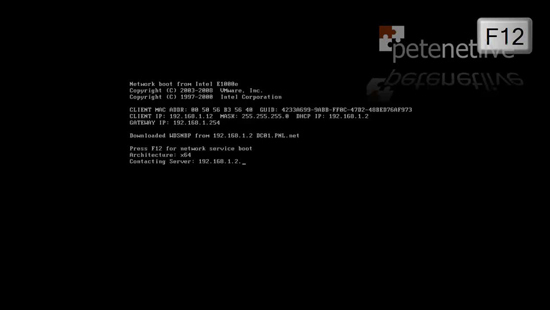
7. Note: Now you can see why (in part one) we called the boot image 'Capture an Image' and the capture 'Capture an Image'. Select the capture option.

8. WindowsPE will run at the welcome screen > Next,
Note: If the process fails at this point, usually it's because the network card driver for this machine IS NOT in the boot image.
Adding Drivers to Images on Windows Deployment Services

9. Select the volume that you want to image, (Note: It will NOT be C: that’s reserved, usually it's D

10. Browse.

11. Navigate to a local drive, and give the image a name with a .wim extension > Save.
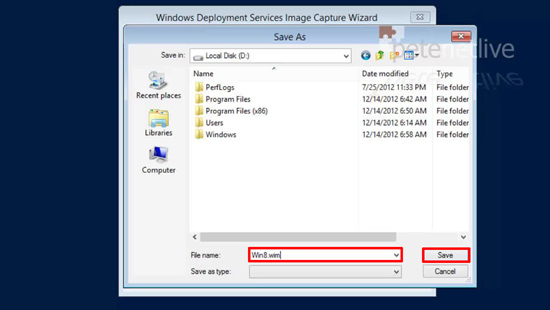
12. Tick the box to upload the image > Supply IP/Name of the WDS server > Connect.

13. Supply credentials to log onto the WDS server > OK.

14. Once authenticated you can select the image group we setup in part one > Next.

15. The image will be created on the reference machine.

16. Then it will be uploaded to the WDS Server.

17. When complete click Finish. At this point the reference machine will reboot and rebuild itself.

18. Back in the Windows Deployment Services management console yo will see the image you have just uploaded in your image group.
Note: Sometimes it can take a while to appear, be patient!
